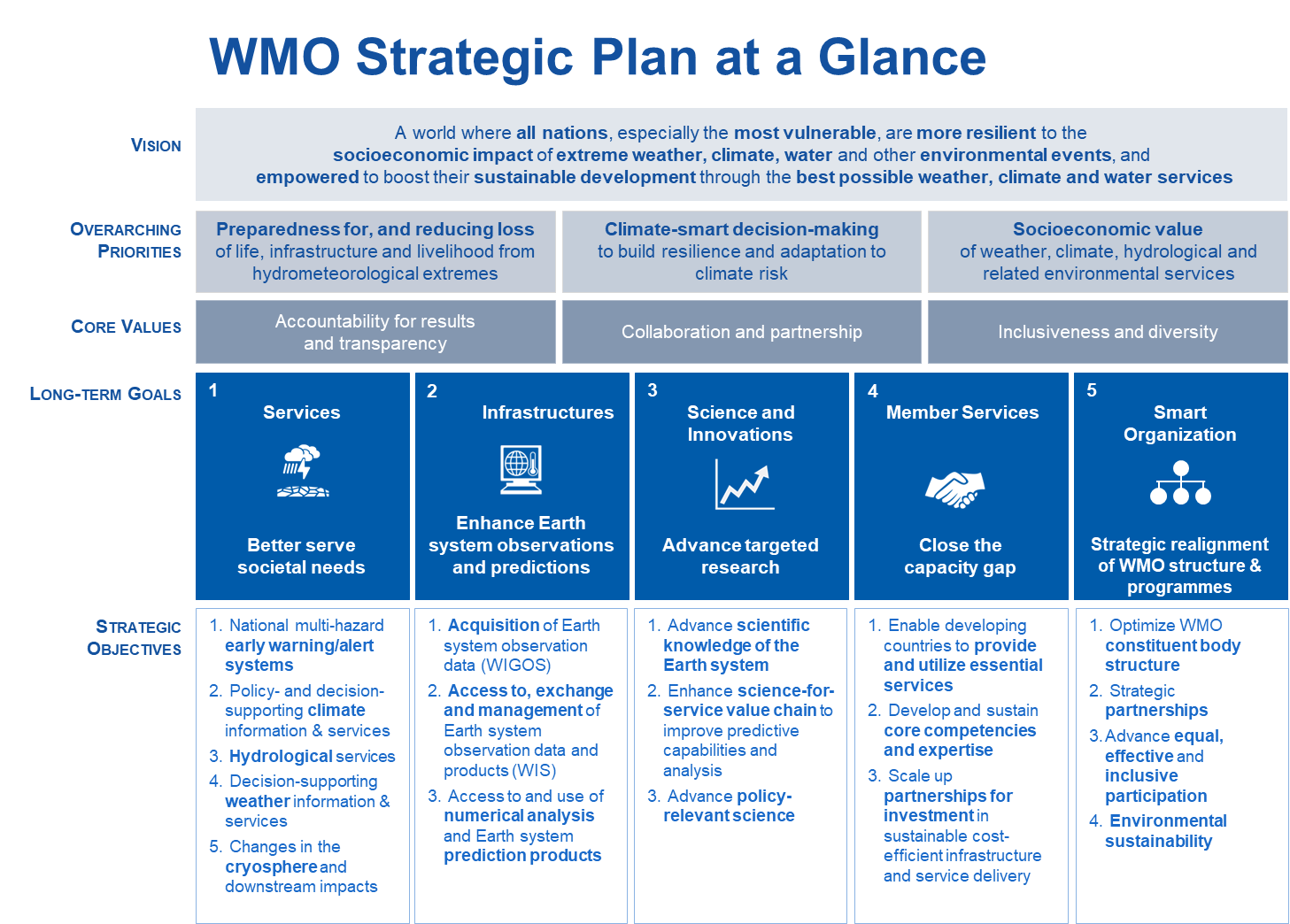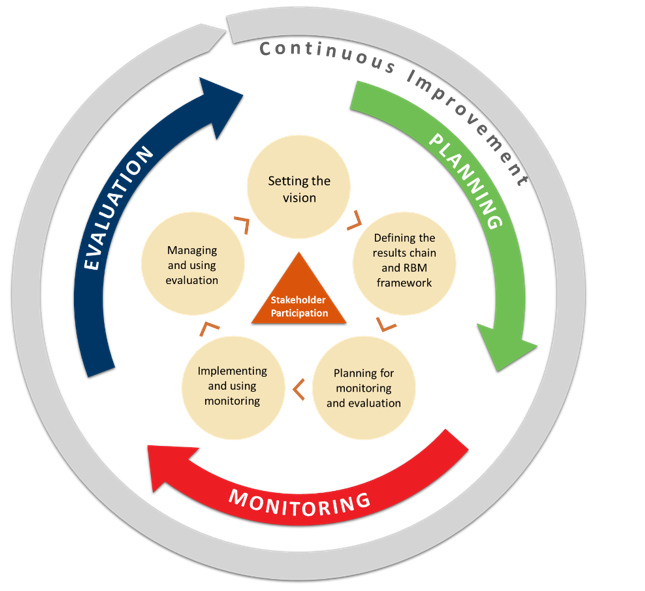Strategic Planning

Download Strategic Plan at a glance
Vision
By 2030, we see a world where all nations, especially the most vulnerable, are more resilient to the socioeconomic consequences of extreme weather, climate, water and other environmental events; and underpin their sustainable development through the best possible services, whether over land, at sea or in the air.
Mission
WMO’s mission is outlined in Article 2 of the WMO Convention as to facilitate worldwide cooperation on monitoring and predicting changes in weather, climate, water and other environmental conditions through the exchange of data, information and services, standardization, application, research and training.
Core values
- Accountability for results and transparency
- Collaboration and partnership
- Inclusiveness and diversity
The process
WMO’s strategic and operational planning is built on the results-based management concept established by the fifteenth World Meteorological Congress as fundamental for managing the planning, budgeting, implementation, monitoring and reporting of WMO’s programmatic work.

The WMO planning process is based on three interlinked components:
- The WMO Strategic Plan articulates the high-level vision, mission, core values and overarching priorities of the Organization. It outlines a set of long-term goals and strategic objectives with a 2030 horizon as well as identifies areas of focus for the 2024-2027 financial period
- The WMO Operating Plan 2024-2027 translates the strategy into specific actions by defining outputs to be delivered (i.e. lower-level results) and annual milestones to be achieved. It also lists planned activities, indicates the resources available, and outlines performance indicators intended to measure progress in achieving the strategic objectives.
- The WMO Results-based Budget (maximum expenditure approved by Congress) identifies resources for implementation of the Strategic Plan, including the functioning of constituent bodies and the Secretariat.
Risk management and quality assurance are embedded in both strategic and operational planning, as well as in monitoring and evaluation processes.

Resources
- WMO Strategic Plan 2024-2027 (WMO-No. 1336)
- WMO Integrated Strategic Planning Handbook (WMO-No.1180)
- Chapter 3: Results-Based Management at WMO, A Primer on Public Policy and Management with a Focus on National Meteorological and Hydrological Services (WMO-No.1289)
- WMO Strategic Plan 2020-2023 (WMO-No. 1225)
- WMO Strategic Plan 2016-2019 (WMO-No. 1161)
- WMO Strategic Plan 2012-2015 (WMO-No.1069)
- WMO Strategic Plan 2008-2011 (WMO-No.1028)
